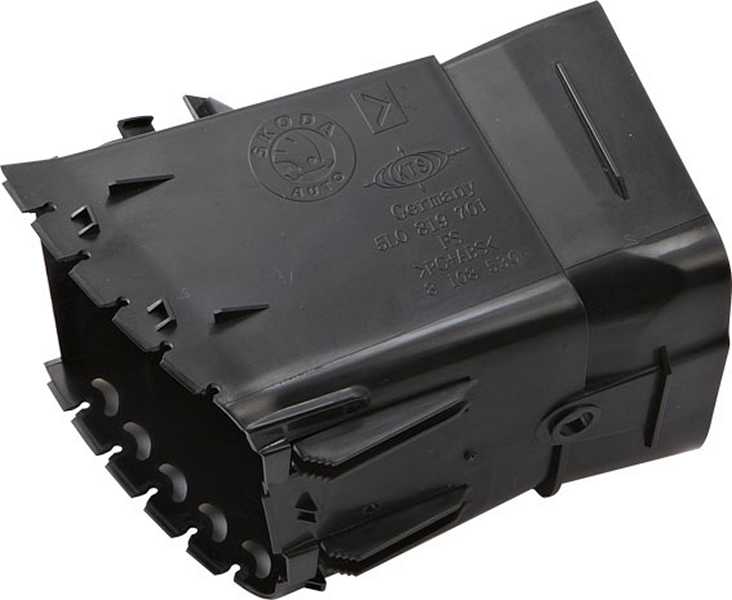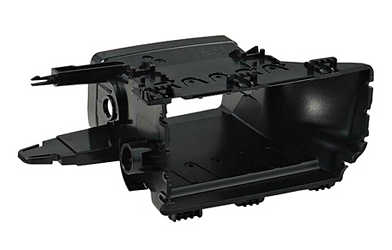Additive Manufacturing vs. Injection Molding: Exploring the Future of Manufacturing Processes
In the dynamic world of manufacturing, two processes have emerged as game-changers: additive manufacturing and injection molding. These innovative techniques have revolutionized the way we create objects and bring designs to life. Additive manufacturing, also known as 3D printing, and injection molding offer distinct advantages and applications in the manufacturing industry. This article aims to delve into the intricacies of both processes, highlight their unique features, compare their benefits, and explore their collaborative potential.
Additive Manufacturing: Redefining Production Possibilities
Additive manufacturing is a groundbreaking technique that fabricates three-dimensional objects layer by layer, directly from digital designs. This process encompasses various technologies such as stereolithography (SLA), selective laser sintering (SLS), fused deposition modeling (FDM), binder jetting, and direct metal laser sintering (DMLS). Each technology utilizes specific materials and methods to transform digital concepts into tangible objects.
The materials used in additive manufacturing range from polymers to metals, ceramics, and even composites. This versatility allows manufacturers to create objects with diverse properties and functionalities. Additive manufacturing offers numerous advantages, including rapid prototyping, customization and personalization, the ability to produce complex geometries, and the efficient production of spare parts. Industries such as automotive, aerospace, healthcare, and consumer goods have embraced additive manufacturing for its ability to optimize production processes and drive innovation.
However, additive manufacturing does have limitations. It can be slower and more expensive than traditional manufacturing methods for mass production. Additionally, certain materials and size constraints may impact the feasibility of certain projects. Nonetheless, ongoing research and development efforts continue to enhance the speed, cost-effectiveness, and material properties of additive manufacturing, paving the way for its wider adoption in the industry.
Injection Molding: Mass Production Made Efficient
Injection molding is a widely employed manufacturing technique that utilizes a mold and molten material to produce large quantities of identical parts. The process involves several steps, including mold preparation, material preparation, injection, cooling and solidification, and ejection. Injection molding primarily employs plastics, but it is also suitable for other materials such as metals, glass, and elastomers.
The advantages of injection molding lie in its ability to efficiently produce high volumes of parts with consistent quality and precision. It is particularly suited for industries requiring mass production, such as automotive, consumer goods, medical devices, and packaging. Injection molding allows for intricate designs, detailed features, and a wide range of material options. Furthermore, advancements in automation, process control, and material development have significantly improved the efficiency and sustainability of injection molding.
While injection molding excels in mass production, it faces challenges in terms of design flexibility and cost-effectiveness for low-volume or highly customized production. It requires initial investment in molds, and design modifications can be time-consuming and expensive. This is where additive manufacturing can complement injection molding, offering flexibility and agility in design iterations, customization, and the production of complex geometries.
Additive Manufacturing vs. Injection Molding: Finding Common Ground
Additive manufacturing and injection molding, though distinct processes, can complement each other in various manufacturing scenarios. By understanding their differences and similarities, manufacturers can harness their combined potential to optimize production processes, reduce costs, and enhance product quality.
In terms of speed and efficiency, injection molding generally outperforms additive manufacturing in mass production scenarios. However, additive manufacturing excels in rapid prototyping and the production of low-volume or customized parts. By strategically utilizing both techniques, manufacturers can balance speed, scalability, and customization requirements.
Cost considerations are vital in manufacturing processes. While injection molding may offer lower costs per unit in high-volume production, additive manufacturing offers advantages in low-volume production by eliminating the need for expensive molds and tooling. Additionally, additive manufacturing allows for design optimization, reducing material waste and minimizing assembly requirements, which can lead to overall cost savings.
Design flexibility is another crucial aspect to consider. Additive manufacturing provides unparalleled design freedom, allowing for complex geometries, intricate details, and the integration of multiple components into a single printed part. Injection molding, on the other hand, may have design limitations due to mold requirements and material flow considerations. By leveraging the strengths of both processes, manufacturers can combine the design flexibility of additive manufacturing with the cost-effective production capabilities of injection molding, resulting in innovative and efficient manufacturing solutions.
Material selection is a crucial factor in manufacturing. Injection molding offers a wide range of materials, including various plastics, metals, and elastomers, providing versatility and durability for different applications. Additive manufacturing has also expanded its material options over the years, enabling the use of advanced polymers, metals, ceramics, and even composites. However, the range of materials available for additive manufacturing may still be more limited compared to injection molding. By understanding the material requirements of a specific project, manufacturers can choose the most suitable manufacturing method to achieve the desired material properties and performance.
Scalability is an important consideration for manufacturing processes. Injection molding excels in scaling up production for high-volume demands due to its ability to quickly produce identical parts. Additive manufacturing, although slower in production, offers scalability in terms of customization and the production of small batches. By integrating both processes, manufacturers can use injection molding for large-scale production and additive manufacturing for customization, spare parts production, or smaller production runs, achieving a balance between efficiency and flexibility.
Collaboration and Future Growth
As additive manufacturing and injection molding continue to evolve, they are increasingly converging in the manufacturing landscape. Manufacturers are exploring innovative approaches that combine the strengths of both processes to overcome individual limitations and achieve optimal results. Collaborative manufacturing workflows, where additive manufacturing is used for prototyping, design validation, and low-volume production, followed by injection molding for mass production, are gaining traction.
Furthermore, advancements in additive manufacturing, such as multi-material and multi-color printing, improved material properties, and enhanced printing speed, as well as developments in injection molding, including smart molds, sustainable materials, and digital twin technology, are shaping the future of manufacturing. These advancements will further strengthen the collaboration between additive manufacturing and injection molding, enabling manufacturers to unlock new possibilities, increase efficiency, and drive innovation in the industry.
At Sincere Tech, we are dedicated to maintaining our position as a leading plastic mold company by embracing industry advancements and anticipating future trends. We actively explore innovative materials and composites that offer improved performance and sustainability. Through ongoing investments in research and development, we deliver cutting-edge solutions that address the evolving needs of our customers. As one of the best injection mold suppliers in China, we pride ourselves on our commitment to excellence.
In line with our commitment to sustainability, we prioritize environmentally friendly practices. We proactively seek sustainable alternatives, such as biodegradable polymers, and implement recycling initiatives to minimize the environmental impact of our manufacturing processes. By choosing our custom injection molding services, you can align your brand with sustainable manufacturing practices and contribute to a greener future.
Quality is of the utmost importance to us, and we maintain stringent quality control measures throughout the entire manufacturing process. Our state-of-the-art facilities and skilled technicians ensure that each product undergoes rigorous inspection and testing, guaranteeing exceptional performance, reliability, and customer satisfaction.
When you partner with Sincere Tech as your preferred China mold maker, you can expect the highest level of professionalism, expertise, and innovation. We are dedicated to helping you bring your ideas to life, delivering superior products that excel in performance, durability, and cost-effectiveness.
Our expanded capabilities include:
- Rapid Prototyping: We offer rapid prototyping services to quickly transform your concepts into tangible prototypes, allowing for iterative design improvements and accelerated product development.
- Precision Tooling: Our advanced tooling capabilities enable us to create high-quality molds with tight tolerances, ensuring consistency and precision in your injection-molded products.
- Overmolding: We specialize in overmolding, which allows for the combination of multiple materials or components, resulting in enhanced functionality, aesthetics, and durability.
- Insert Molding: Our expertise in insert molding enables us to securely encapsulate inserts within the molded parts, facilitating efficient assembly and enhancing product performance.
- Two-Shot Molding: With two-shot molding, we can produce complex, multi-material components in a single operation, reducing assembly requirements and enhancing design possibilities.
- Value-Added Services: In addition to injection molding, we offer a range of value-added services, including product assembly, packaging, and logistics support, streamlining your supply chain and reducing costs.
Partner with Sincere Tech Mould suppliers for your custom injection molding needs, and benefit from our comprehensive capabilities, unwavering commitment to quality and sustainability, and our drive to exceed your expectations at every step of the process. Together, let’s bring your innovative ideas to life.
Conclusion
Additive manufacturing and injection molding are two transformative processes in the manufacturing world. While each has its unique advantages and limitations, their combined potential offers a powerful solution for manufacturers. By understanding the intricacies of both processes and strategically integrating them into manufacturing workflows, manufacturers can achieve the benefits of rapid prototyping, design flexibility, customization, scalability, and cost-effective mass production. The future of manufacturing lies in the convergence of additive manufacturing and injection molding, where innovation and efficiency will flourish, shaping the landscape of the industry for years to come.
